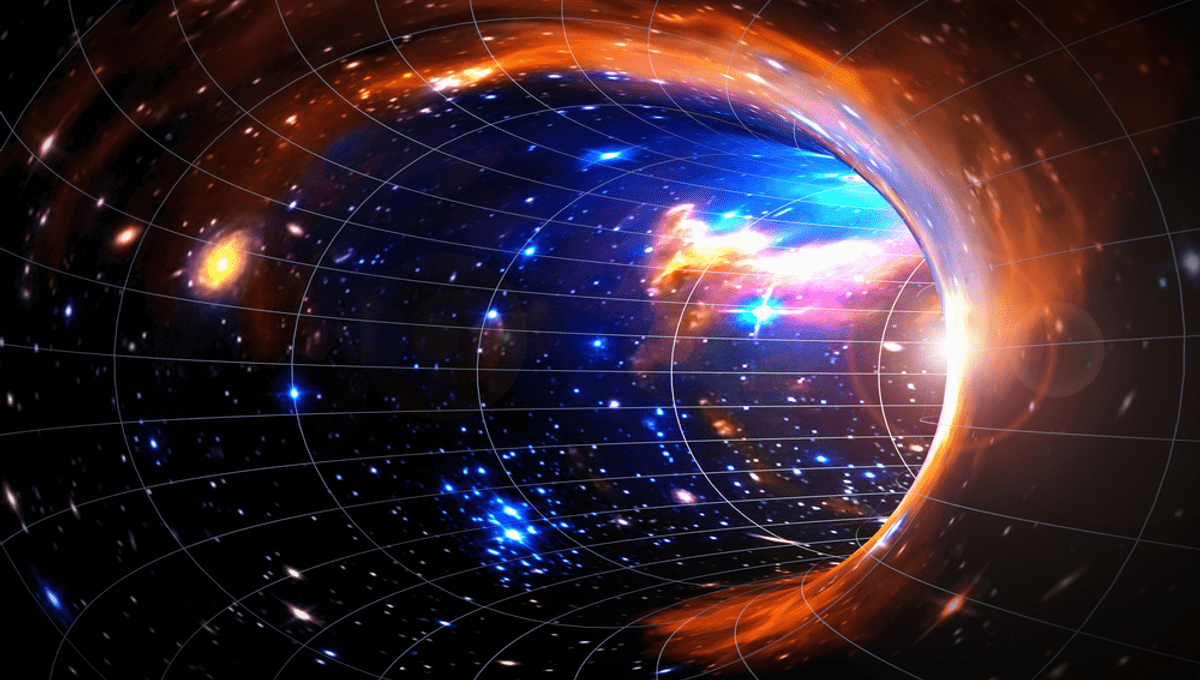
A team of Chinese scientists has brought together two major revelations from General Relativity and found they may add up to something big when it comes to finding wormholes.
Wormholes are conceived as tunnels through spacetime connecting two distant regions, allowing shortcuts that avoid the need to travel immense distances. Microlenses, despite their name, are objects massive enough to distort the movement of light, forming an additional lens that can give a boost to optical devices on Earth.
There is great debate within physics as to whether it is possible to use wormholes to travel to distant parts of the universe, and maybe even send messages back. Even if that proves impossible or beyond our medium-term capacity, however, we may still find wormholes very useful. One model suggests wormholes could enhance our power to view distant objects up to 100,000 times.
For this to work, however, we first need to actually find some.
We don’t yet know if wormholes exist, but that hasn’t stopped physicists from devoting considerable thought to what they would be like if they do, including coming up with a number of different subcategories. Microlenses, on the other hand, are definitely real. We’ve used them to discover free-floating planets we wouldn’t have been able to spot in other ways, for example. Their larger cousins, galactic gravitational lenses, are the reason the JWST has seen structures from shortly after the Big Bang, using the boost in power provided by suitably placed foreground galaxies.
Wormholes’ relatives, black holes, are powerful gravitational lenses, bending the light that doesn’t come close enough to be trapped entirely around them. Therefore, Dr Lei-Hua Liu of Jishou University and co-authors reasoned, wormholes would have lensing effects of their own. They modeled these effects for the case of an electrically charged spherically symmetric wormhole.
Gravitational lenses frequently create multiple images of the same more distant object, which can be compared with each other for a complete picture. The authors find wormholes can produce up to three images of objects located far beyond them. In this case, one of the images would be more magnified than the other two.
The authors conclude that, depending on the orientation of the observer, the wormhole and the distant object the images produced could be anything from a hundred times smaller than without the presence of the wormhole to magnified 100,000-fold.
Considering microlensing events with a magnification of ten are considered large, this really is a different scale. However, the paper explains, if wormholes exist they; “Would behave as a macroscopic negative mass and provide unique signals in astrophysics.”
A straightforward negative mass would presumably have an effect on light the same size, but in the opposite direction, to a positive one. However, proving things that really shouldn’t go together are not just the realm of quantum physics, the authors conclude; “The wormhole should behave like a positive mass in the remoter region, and like a negative mass in the closer region.” This combination, along with the effects of the wormhole’s electric charge, add up to the potential for immense magnification.
The potential to use wormholes as super-powerful telescope enhancers is certainly exciting, but just finding one might be more important for what such a discovery would teach us about physics. If wormholes really do magnify distant objects this much, even occasionally, we may be able to identify them by looking for exceptionally distant objects that look a lot brighter and larger than they should, and then identifying the object responsible.
The paper is published in Physical Review D
H/T New Scientist
Source Link: Wormholes Distorting Light Could Be Our Most Powerful Eyes In The Sky